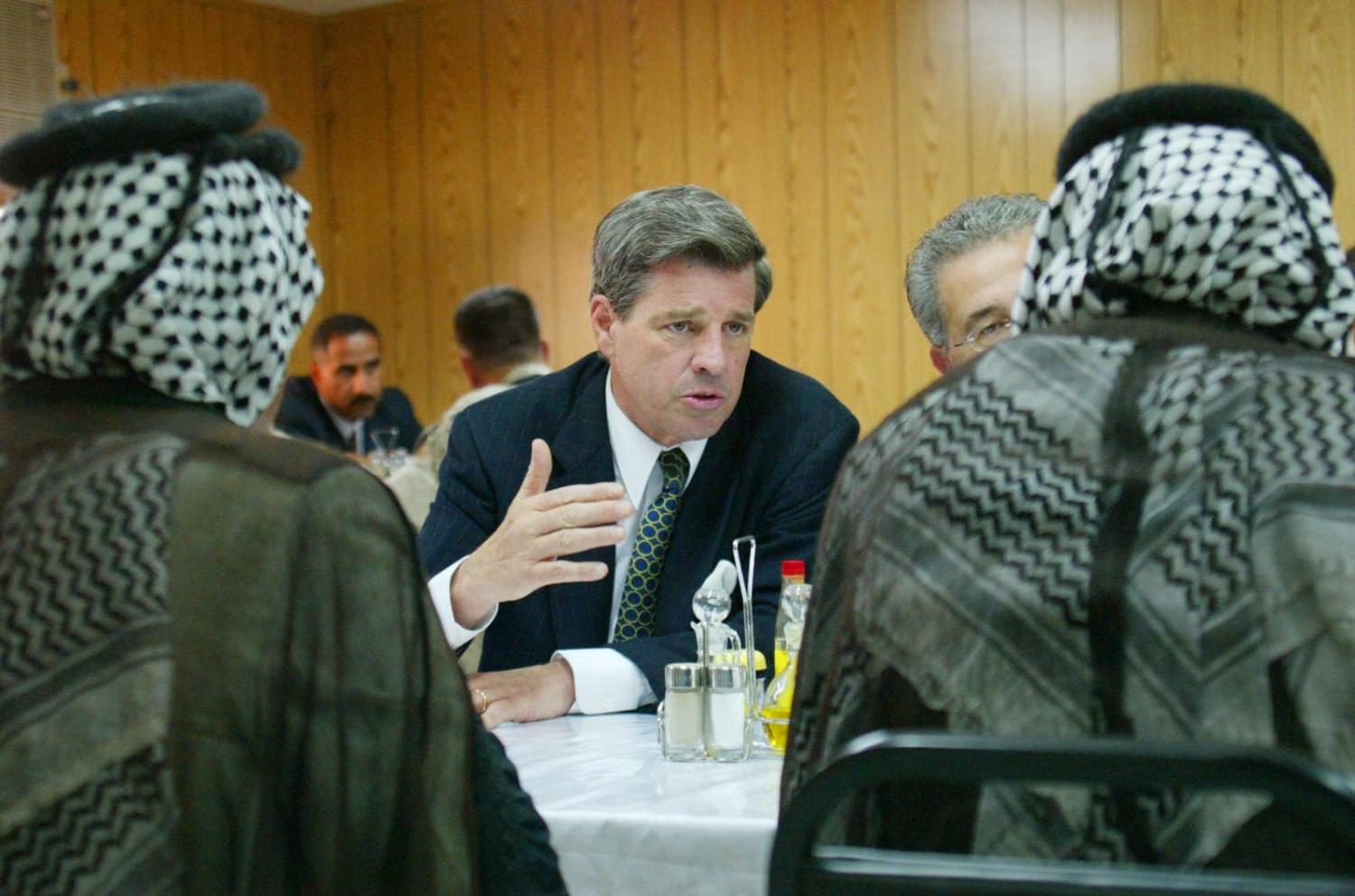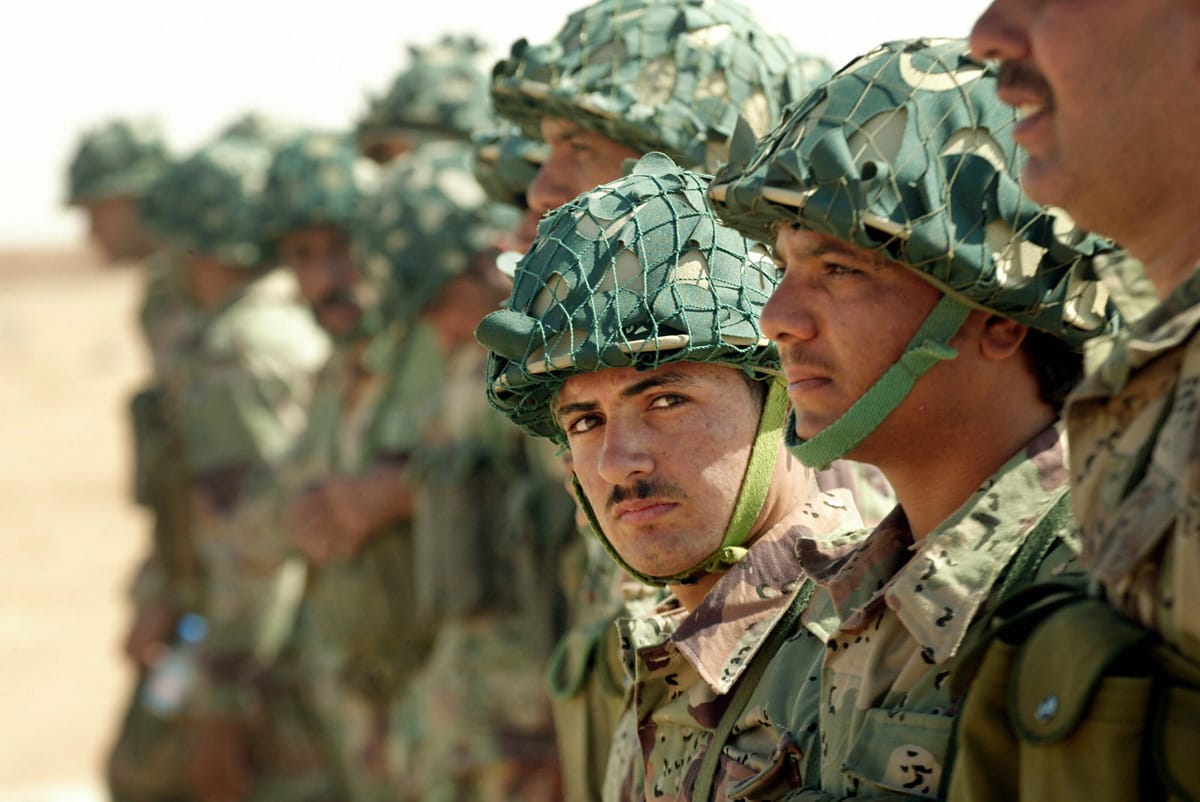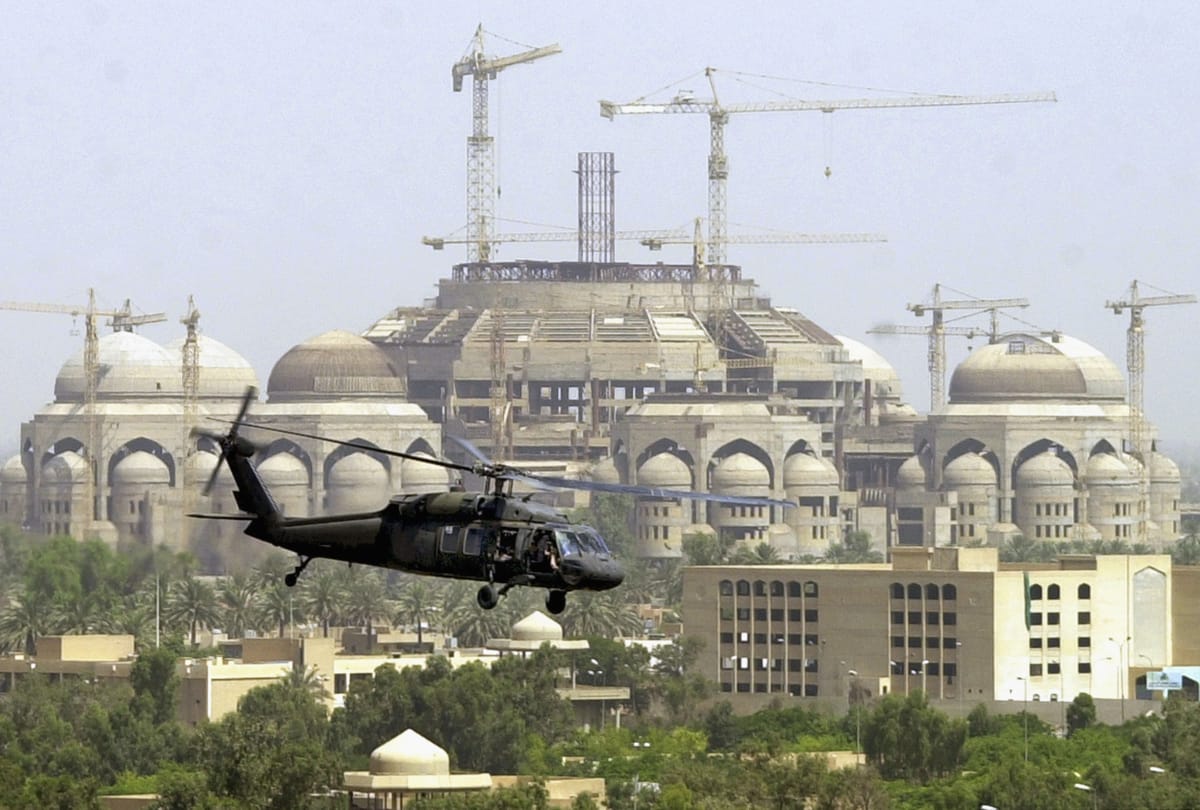Twenty years on, the former Coalition Provisional Authority
head reflects on his year in charge of the country.

“Certainly, the authorities in Washington who had prepared our policy directive did not visualise these conditions” – Lucius Clay, reflecting on his time in the 1940s as US military governor in charge of Occupied Germany.
I had much the same feeling arriving in Baghdad in May 2003.
President George W. Bush had appointed me head of the Coalition Provisional Authority (CPA). We faced three challenges: to provide security, to help Iraqis set their country on the path to representative government, and to start rebuilding the economy.
Iraq was shattered – politically, economically, morally. For decades, Iraqis had suffered under Saddam Hussein. He used force – his army, the police, the Baath Party and his feared intelligence service – to control every aspect of daily life.
When I arrived, looters had been pillaging for three weeks. Iraqi police had deserted their posts. Looters destroyed many government buildings. The crucial Ministry of Finance had room for only half of its civil servants. The violence had caused economic damage equal to half Iraq’s pre-war GDP.
Coalition forces established control. We had to decide what to do with Saddam’s army given its former role, its status after the fall of Baghdad, and political considerations about any future Iraqi army.
After the First World War, the army initially played a constructive role. But for three decades, Saddam had used that army to repress the Iraqi people. In the north, the army killed, maimed and tortured hundreds of thousands of Iraq’s Kurds. After the 1991 Gulf War, that army repressed a Shia uprising in the south. Thousands of citizens were machine gunned and thrown into mass graves. One grave discovered the week I arrived contained more than 10,000 bodies. Over the next year, we discovered 300 other mass graves.
In Saddam’s army, enlisted draftees were predominantly Shia and often mistreated by their officers, most of whom were Sunnis. When it became clear that Iraq was losing the war, draftees had deserted their posts and returned to their villages. In early April 2003, senior US Defence Department officials said Saddam’s army had “self-demobilised”. There was no army to “disband”.
Some American officers discussed the possibility of recalling elements of Saddam’s army. Decisive political arguments opposed that idea. Kurdish leaders told me that a recall would trigger Kurdish secession from Iraq, provoking a civil war, possibly a wider regional war. Hearing the rumours, Shia leaders threatened to stop cooperating with the Coalition. Together, the Kurds and the Shia make up about 80 per cent of Iraq’s population.
We had to build a new army. We decided to pay enlisted soldiers a separation bonus. All but the most senior former officers received a monthly pension twice what Saddam would have given them. We announced that officers and volunteers from the previous army up to the rank of Colonel could apply to join the new army.
It was a mistake not to announce the severance and pension payments when we announced the Coalition’s plan for a new army. Several weeks later, we announced the payments. Demonstrations by former soldiers stopped.
Some men from the former army may have joined the insurgency. But if so, it was not because they had been denied an opportunity to serve their country or to live on their pensions and earnings. It was because they wanted to reinstall a Baathist dictatorship.

The Coalition’s major political goal was to help the Iraqis establish representative government.
Most Iraqis had never lived under a democratic government. There was no balance of power in Saddam’s government. There was no independent judiciary. The only legal party was the Baath Party. Modelled on Hitler’s Nazi Party, it was Saddam’s political instrument of repression.
The US State Department’s pre-war plan urged that steps be taken to “block the appointment or promotion of any figure who has Baathist sympathies”. About ten per cent of Iraqis were party members. Some might have joined not out of conviction, but to get access to jobs or favours from Saddam’s regime.
The Coalition’s “de-Baathification” decree was narrowly drawn. It applied only to the top one per cent of party members (about a tenth of one per cent of the population). Those officials could not hold government jobs. They were free to set up businesses, or even newspapers. I authorised many exceptions to this lenient policy, allowing scores of ranking Baathists to remain in government positions. The claim that de-Baathification collapsed the Iraqi government is simply wrong.
My mistake was assigning the program’s implementation to Iraqi politicians who tried to broaden the decree’s effect. I should have set up an Iraqi judicial panel to oversee implementation.
The CPA moved quickly to establish an interim Iraqi government. Within two months, we announced an Iraqi Governing Council (IGC). That Council appointed ministers to lead Iraq’s 25 ministries. I met often with the ministers, underscoring their authority to run their ministries. I never overruled a minister’s decision.
After months of debate, IGC reached an agreement providing that Iraqis would draft an Interim Constitution as the essential basis for representative government. That Interim Constitution established the principles on which Iraq’s permanent constitution came to be based: individual rights, free elections, an independent judiciary and federalism.

We also had to get the economy back on its feet.
Through corruption and spectacular misallocation of Iraq’s capital resources, Saddam had destroyed one of the region’s best economies. The secret government budget was in chronic deficit. Every Friday, the central bank would print the amount of currency Saddam guessed would be needed the following week. The Ministry of Planning told us that before the war, inflation ran at an annual rate of 110,000 per cent. Unemployment was 50 per cent. Civil servants had not been paid salaries or pensions for three months.
Before the war, Iraq’s electricity production was less than half of what was needed. After the war, no oil was being exported.
The Iraqi government had no revenues. Hospitals and schools were closed. The primitive banking system was shuttered. Saddam’s Iraq was like a well-armed Potemkin village.
The World Bank estimated Iraq’s GDP at US$20 billion; $75 to $100 billion would be needed to repair Iraq’s dilapidated economic infrastructure.
The CPA took aggressive action. We immediately increased salaries and pensions three to five-fold and made back-payments. We eliminated import tariffs and barriers to trade. Taxes were lowered and the exchange rate freed to be determined by the market, not bureaucrats. We replaced Saddam’s currency and allowed the new currency to float with the market. We established an independent central bank. We increased health care spending from US$13 million to US$983 million.
We financed massive employment projects creating hundreds of thousands of jobs. When we left Iraq, we had completed some 22,000 reconstruction projects all over the country.
The Coalition’s record was far from perfect. But we got the fundamentals right thanks to the sacrifices of 40 countries, including Australia, who sent troops and 30 countries who sent civilian volunteers to serve in the CPA.
When the CPA handed over sovereignty in June 2004, 60 per cent of the new army’s officers and men were from the old army. That army, working with America’s, defeated al-Qaeda in Iraq in 2009.
The remarkable turnout of Iraqis in six elections and one referendum since 2004 shows that Iraqis wanted to replace tyranny with democracy. That was the result of the region’s most modern constitution.
When the CPA left in 2004, Iraq’s economy was on the way to recovery. Monthly inflation had been cut to two per cent. The United Nations Development Program reported that unemployment was 10.5 per cent. A report by the International Monetary Fund found that the Iraqi economy rebounded by over 46 per cent in 2004.
